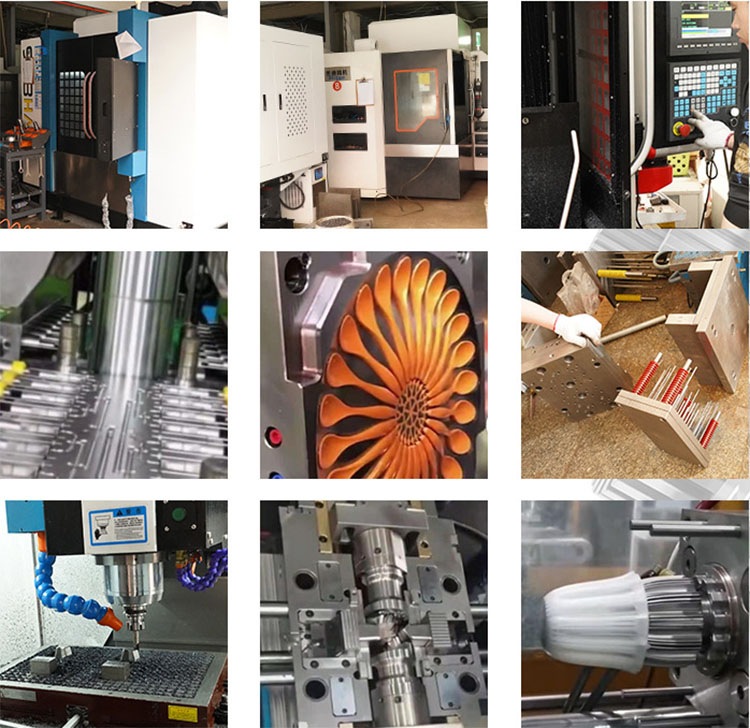Mold material selection is a very important link in the entire mold making process.
The mold material selection needs to meet three principles. The mold meets the work requirements such as wear resistance and toughness, the mold meets the process requirements, and the mold should meet the economical applicability.
(1) The mold meets the requirements of working conditions
1. Wear resistance
When the blank is plastically deformed in the mold cavity, it both flows and slides along the surface of the cavity, causing severe friction between the surface of the cavity and the blank, resulting in the failure of the mold due to wear. Therefore, the wear resistance of the material is one of the most basic and important properties of the mold.
Hardness is the main factor affecting wear resistance. In general, the higher the hardness of the mold parts, the smaller the amount of wear and the better the wear resistance. In addition, wear resistance is also related to the type, quantity, shape, size and distribution of carbides in the material.
2. Strong toughness
Most of the working conditions of the mold are very bad, and some often bear a large impact load, which leads to brittle fracture. In order to prevent sudden brittle fracture of mold parts during operation, the mold must have high strength and toughness.
The toughness of the mold mainly depends on the carbon content, grain size and organizational state of the material.
3. Fatigue fracture performance
During the working process of the mold, fatigue fracture is often caused under the long-term action of cyclic stress. Its forms include small-energy multiple impact fatigue fracture, tensile fatigue fracture, contact fatigue fracture and bending fatigue fracture.
The fatigue fracture performance of the mold mainly depends on its strength, toughness, hardness, and the content of inclusions in the material.
4. High temperature performance
When the working temperature of the mold is higher, the hardness and strength will decrease, resulting in early wear of the mold or plastic deformation and failure. Therefore, the mold material should have high anti-tempering stability to ensure that the mold has high hardness and strength at working temperature.
5. Heat and cold fatigue resistance
Some molds are in a state of repeated heating and cooling during the working process, which causes the surface of the cavity to be subjected to tension, pressure and stress, causing surface cracking and peeling, increasing friction, hindering plastic deformation, and reducing dimensional accuracy, resulting in Mold failure. Hot and cold fatigue is one of the main forms of failure of hot work dies, and these dies should have high resistance to cold and heat fatigue.
6. Corrosion resistance
When some molds such as plastic molds are working, due to the presence of chlorine, fluorine and other elements in the plastic, strong corrosive gases such as HCI and HF are decomposed after heating, which erodes the surface of the mold cavity, increases its surface roughness, and aggravates wear failure.
(2) The mold meets the process performance requirements
The manufacture of molds generally has to go through several processes such as forging, cutting, and heat treatment. In order to ensure the manufacturing quality of the mold and reduce the production cost, the material should have good forgeability, machinability, hardenability, hardenability and grindability; it should also have small oxidation, decarburization sensitivity and quenching. Deformation and cracking tendency.
1. Forgeability
It has low hot forging deformation resistance, good plasticity, wide forging temperature range, low tendency for forging cracking and cold cracking and precipitation of network carbides.
2. Annealing technology
The spheroidizing annealing temperature range is wide, the annealing hardness is low and the fluctuation range is small, and the spheroidizing rate is high.
3. Machinability
The cutting amount is large, the tool loss is low, and the machined surface roughness is low.
4. Oxidation and decarburization sensitivity
When heated at high temperature, it has good oxidation resistance, slow decarburization, insensitivity to heating medium, and small tendency to pitting.
5. Hardenability
It has a uniform and high surface hardness after quenching.
6. Hardenability
After quenching, a deep hardened layer can be obtained, which can be hardened by using a mild quenching medium.
7. Quenching deformation cracking tendency
The volume change of conventional quenching is small, the shape is warped, the distortion is slight, and the abnormal deformation tendency is low. Conventional quenching has low cracking sensitivity and is not sensitive to quenching temperature and workpiece shape.
8. Grindability
The relative loss of the grinding wheel is small, the limit grinding amount without burn is large, and it is not sensitive to the quality of the grinding wheel and cooling conditions, and it is not easy to cause abrasion and grinding cracks.
(3) The mold meets the economic requirements
In the selection of mold materials, the principle of economy must be considered to reduce manufacturing costs as much as possible. Therefore, under the premise of satisfying the performance, first choose the lower price, if you can use carbon steel, you don’t need alloy steel, and if you can use domestic materials, you don’t need imported materials.
In addition, the production and supply situation in the market should also be considered when selecting materials. The selected steel grades should be as few and concentrated as possible and easy to purchase.
Post time: Jun-21-2022

